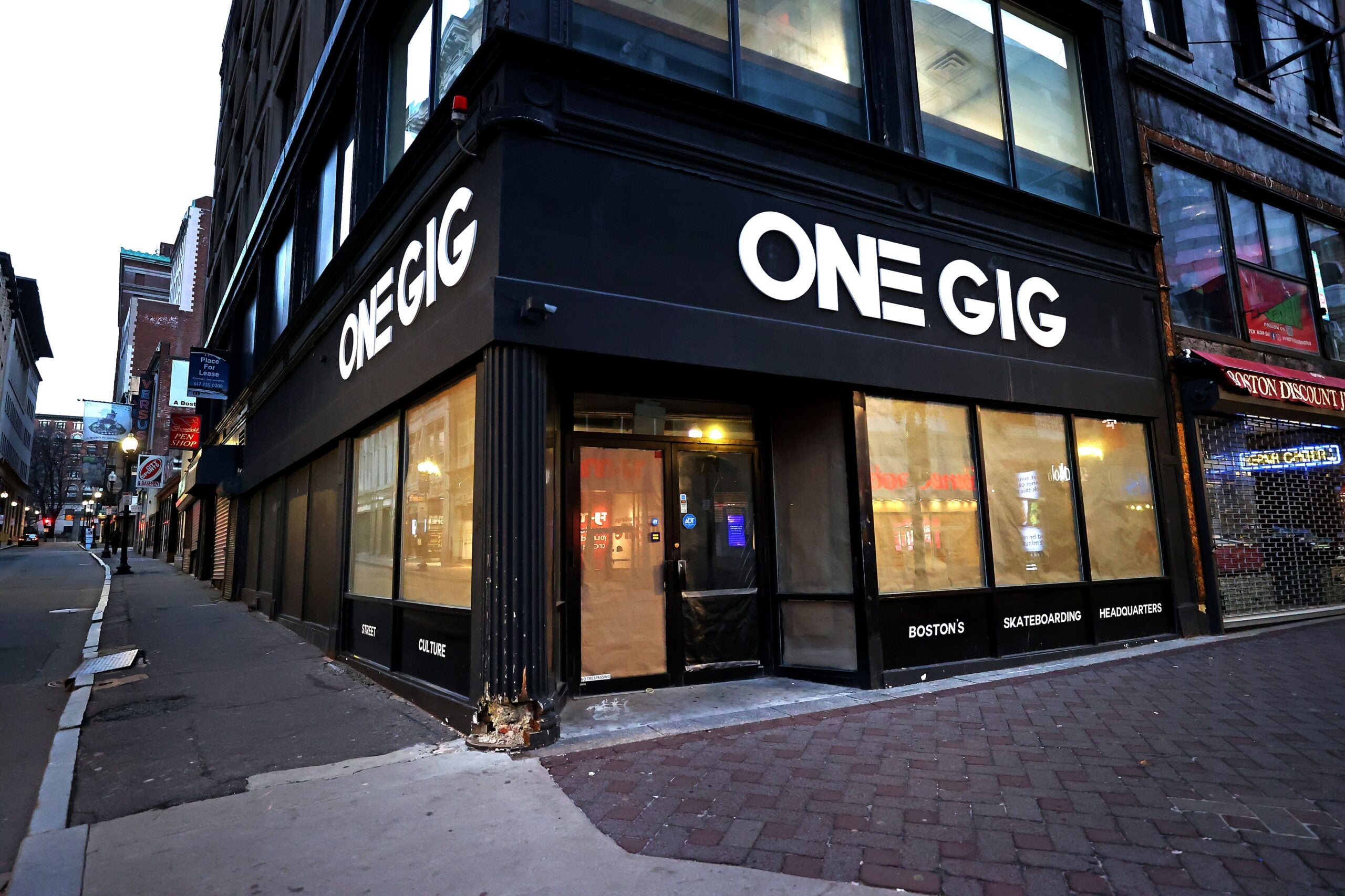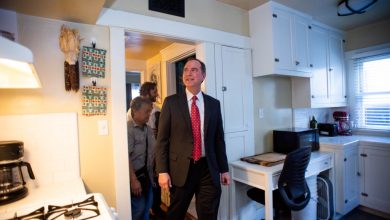What a 417,000-square-foot project on the corner of Bromfield Street could say about the future of downtown

The Boston Globe
The powers that be at City Hall face a crucial decision: Let a developer pursue office plans there, or force him to go back to the drawing board for housing.
The block at the corner of Bromfield and Washington Streets in Downtown Crossing. DAVID L. RYAN/GLOBE STAFF
As she attempts to breathe new life into downtown Boston, Mayor Michelle Wu faces two real estate crises: Too many offices, not enough housing.
Now, an ambitious project to breathe new life into an important neighborhood in the heart of the central business district could end up getting stuck in the middle of it.
New York-based Midwood Investment & Development has been trying for several years to build a 23-story office tower at the corner of Bromfield and Washington streets. The fate of this 417,000-square-foot project could say a lot about the future of downtown, in a post-pandemic era where fewer office workers come and go five days a week and vacant storefronts abound. The powers that be at City Hall face a crucial decision: Let Midwood pursue office plans there, or force it back to the drawing board for housing.
Today the place is an eyesore, with wallpapered store windows and empty offices upstairs, with a handful of jewelry kiosks as the only remaining tenants. Signs depicting beloved retailers City Sports and Bromfield Pen still hang outside, remnants of a not-so-distant past when Bromfield thrived as a quirky and vibrant neighborhood.
Midwood general manager John Usdan was patient. This is his third attempt at redeveloping the block. His company invested there in the 1990s before buying the site around twenty years ago. Its first residential tower project was abandoned during the Great Recession. A second residential proposal, called One Bromfield, has been sidelined due to concerns about its parking, as the two adjacent streets have limited vehicle access. Meanwhile, two other luxury residential towers were built in the immediate vicinity: 45 Province opened in 2009, then the Millennium Tower filled the once-blighted “Filene’s Hole” opposite Bromfield in 2016.
In early March 2020, Midwood returned to the Boston Planning & Development Agency, this time with an office tower in mind and with parking erased from the plans. Of course, the timing couldn’t have been worse.
Despite all the market uncertainty brought on by the rise of remote and hybrid work, Usdan and his team persevered. They have progressed thanks to BPDA permits. After four years, they are close to the finish line.
Large commercial real estate brokerages don’t paint a pretty picture of the office market right now, although Boston appears to be faring better than many other major U.S. cities. Colliers, for example, recently reported that more than a quarter of downtown’s 36.5 million square feet of office space is available for lease, either directly or through sublease . Across the city, at least 50 buildings have more than half their available space, five times the number recorded four years earlier. Colliers researchers’ summary of market conditions? “considerably weakened. »

So what is Usdan thinking?
There is a silver lining in this pessimistic situation: a healthy demand for the shiny and the new. Blue-chip tenants are trading up, with companies like State Street and Deloitte moving into fancy, newly built towers like One Congress (full) and Winthrop Center (more than halfway there). Renters who are moving often choose the highest quality new space available.
This is exactly where Midwood wants to play. Citing figures from brokerage firm JLL, Midwood noted at a November meeting that the vacancy rate among downtown towers built after 2009 was less than 8 percent, compared with 18 percent for buildings older. (Vacancy rates do not include space available for sublease.) The Bromfield project, if fully leased, would create 1,700 jobs, as well as more than $5 million in property taxes. The project would be carbon neutral. It would feature numerous outdoor terraces. And it wouldn’t be as high as the 45 Province, or the much larger Millennium.
But does downtown need another office tower today? That November meeting generated strong opinions on both sides.
Supporters, including union representatives and other real estate industry stakeholders world, welcomed the potential for private sector investment in an area of the city that could really benefit. Critics fall largely into two camps: those who live in the 45th province and those who are generally concerned about the growing number of towers casting shadows and wind on historic downtown buildings, such as the Old South Meeting House and the Old Corner Bookstore building. Tony Ursillo, a resident of 45 Province, argues that the neighborhood should have many more people living there, to give it more vibrancy 24/7, while Revolutionary Spaces President Nat Sheidley expresses his concerns that tall towers could drive tourists away from historic sites. .
The people who matter most in this debate work a few blocks away at City Hall. It’s been pretty quiet on that front, at least publicly. The BPDA declined to comment, as did Midwood. Asked about the project, a spokeswoman for Wu pointed to a September neighborhood meeting in which she discussed the broader downtown planning process and expressed skepticism about adding new retail spaces. offices that could create more vacancies in existing buildings, while trying to encourage more residential development there. .
Going residential is not foolproof.
Despite Intense demand, housing projects remain difficult to finance at present, given relatively high interest rates.
As many as 23,000 housing units have won city approval but have yet to begin construction, and a plan launched by Wu last fall to consider tax incentives to help revive some of them does not has not yet materialized. The conversions of offices into housing have not been very rapid either, despite the significant tax breaks proposed by the town hall for buildings in the city center: so far, six requests have been submitted, for nearly 220 units in total. And in Midwood’s case, returning to a residential tower would add at least a year or two to obtaining a permit, and also revive the challenge of parking, considered a must for high-end housing.
Then there’s this fundamental truth: It’s difficult for any public official to force developers to build something they simply don’t want.
Few people care as much about the future of downtown as Michael Nichols, who heads the Downtown Boston Business Improvement District. Nichols knows the mix of uses needs to change, as Wu suggested in a recent speech to the New England Council. But he’s also eager to take action on the Midwood property. BID member Midwood developed several thoughtful proposals for that corner, he said, and faced an “unusually lengthy” review. He is concerned about the prolonged inactivity but remains hopeful that a green light could come soon.
Downtown could definitely use more residents today. But it also needs this block, long abandoned, to be rejuvenated. This first goal could help the second – or it could end up getting in the way.

Boston





